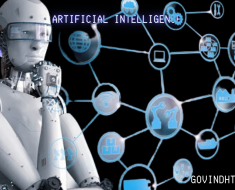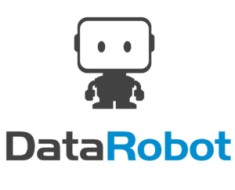
According to 2023 research, most people are concerned about the implications of generative AI on data security, ethics, and bias. In fact, 81% of customers want a human to be in the loop, reviewing and validating generative AI outputs.
A mere 37% of customers trust AI’s outputs to be as accurate as those of an employee. The research found that the trust gap widens as AI goes mainstream. Brands are turning to generative AI to boost efficiency while improving customer engagement. Customers — wary of the technology risks — demand a thoughtful approach built on trust. Eighty percent of customers say it’s important for humans to validate AI’s outputs.
Also: Two breakthroughs made 2023 tech’s most innovative year in over a decade
Demystifying AI could significantly reduce the fear surrounding it. If we can move AI from an opaque black box to a transparent glass cube, we can recalibrate how we adopt the technology. A strong argument can be made that every AI foundational model must have a FICO score.
The latest State of IT 2023 Report by Salesforce, a survey of 4,300 IT decision-makers and leaders, found that 9 out of 10 CIOs believe generative AI has gone mainstream. The report found that AI and automation underpin efficiency and innovation. Process automation is on the rise as businesses tighten their belts and seek efficiency boosts, while advances in AI prompt IT to determine how — not if — to responsibly propel their organizations forward. Eighty-six percent of IT leaders believe generative AI will have a prominent role in their organizations in the near future.
McKinsey’s latest research estimates that generative AI could add the equivalent of $2.6 trillion to $4.4 trillion annually across the 63 use cases analyzed by McKinsey — by comparison, the United Kingdom’s entire GDP in 2021 was $3.1 trillion. https://t.co/CtEHUZXe1o pic.twitter.com/YLTMhPPN25
— Vala Afshar (@ValaAfshar) August 9, 2023
According to McKinsey, 50% of organizations used AI in 2022. IDC is forecasting global AI spending to increase a staggering 26.9% in 2023 alone. A recent survey of customer service professionals found adoption of AI had risen by 88% between 2020 and 2022.
McKinsey’s latest research estimates that generative AI could add the equivalent of $2.6 trillion to $4.4 trillion annually across the 63 use cases. Generative AI will revolutionize the way we work.
Also: AI in 2023: A year of breakthroughs that left no human thing unchanged
AI is the electricity of the 21st century. Ignore it and your business will be left in the dark. After all, we already know many ways that generative AI will shape how we work.
Research on generative AI’s impact on the future of work reveals that AI has the potential to automate 40% of the average workday.
Productivity gains from generative AI in marketing sees marketers saving one month a year. https://t.co/IAFuwJORWa— Vala Afshar (@ValaAfshar) August 10, 2023
A survey suggests AI has the potential to automate 40% of the average work day, according to research firm Valoir. The widespread use of generative artificial intelligence has raised public awareness of its ability to increase productivity and efficiency, as well as its risks.
AI and automation propel efficiency and innovation. Salesforce
So, what are the largest and most influential technology analyst firms saying about the impact of generative AI on the future of work and the enterprise? According to Gartner, generative AI will make an increasingly strong impact on enterprises over the next five years. Gartner predicts that:
- By 2024, 40% of enterprise applications will have embedded conversational AI, up from less than 5% in 2020.
- By 2025, 30% of enterprises will have implemented an AI-augmented development and testing strategy, up from 5% in 2021.
- By 2026, generative design AI will automate 60% of the design effort for new websites and mobile apps.
- By 2026, over 100 million humans will engage robocolleagues to contribute to their work.
- By 2027, nearly 15% of new applications will be automatically generated by AI without a human in the loop, which is not happening at all today.
- More than 55% of all data analysis by deep neural networks will occur at the point of capture in an edge system by 2025, up from less than 10% in 2021.
The primary focus of generative AI initiatives. Gartner
Generative AI is positioned on the Peak of Inflated Expectations on the Gartner Hype Cycle for Emerging Technologies, 2023. Here are Gartner’s top 10 strategic predictions:
- By 2027, the productivity value of AI will be recognized as a primary economic indicator of national power.
- By 2027, GenAI tools will be used to explain legacy business applications and create appropriate replacements, reducing modernization costs by 70%.
- By 2028, enterprise spending on battling malinformation will surpass $30 billion, cannibalizing 10% of marketing and cybersecurity budgets to combat a multifront threat.
- By 2027, 45% of chief information security officers (CISOs) will expand their remit beyond cybersecurity, due to increasing regulatory pressure and attack surface expansion.
- By 2028, the rate of unionization among knowledge workers will increase by 1,000%, motivated by the adoption of GenAI.
- In 2026, 30% of workers will leverage digital charisma filters to achieve previously unattainable advances in their careers.
- By 2027, 25% of Fortune 500 companies will actively recruit neurodivergent talent across conditions like autism, ADHD, and dyslexia to improve business performance.
- By 2028, there will be more smart robots than frontline workers in manufacturing, retail, and logistics due to labor shortages.
- By 2026, 50% of G20 members will experience monthly electricity rationing, turning energy-aware operations into either a competitive advantage or a major failure risk.
- By 2026, generative AI will significantly alter 70% of the design and development effort for new web applications and mobile apps.
IDC believes that the tech industry is at a seminal moment. Never have we seen a technology emerge with this much executive support, clearly defined business outcomes, and rapid adoption.
Also: These 5 major tech advances of 2023 were the biggest game-changers
IDC has identified three broad types of generative AI use cases that need to be assessed that are industry specific, business function, and productivity-related.
Generative AI: The path to impact. IDC
IDC notes that the landscape of business may be seeing a seismic shift with the rise of generative AI. IDC advises business leaders to start with the following solid foundation:
- Responsible AI policy: A well-defined AI policy that outlines principles of fairness, transparency, accountability, and data protection is paramount.
- AI strategy and roadmap and the role of the proof of concept: The AI strategy should include the rules or guidelines for generative AI proofs of concept (POCs), and it should incorporate the results of the POCs to recursively improve the strategy.
- Intelligent architecture: Data privacy, security, and intellectual property protection must also be embedded within this platform architecture.
- Reskilling and training: Most organizations do not have mature skill sets (prompt engineering, data science, data analysis, AI ethics, modeling) required to take full advantage of generative AI.
IDC also notes that data serves as the foundation for generative AI. When IDC surveyed clients about their data, troubling results were revealed.
AI will radically reshape IT, according to IDC. Code generation, enterprise content management, marketing, and customer experience applications are some of the key areas for generative AI use cases in the enterprise, per IDC. IDC forecasts enterprise spending on GenAI services, software and infrastructure will grow from $16 billion in 2023 to $143 billion in 2027. Spending on generative AI over the four-year period to 2027 is expected to reach a compound annual growth rate (CAGR) of 73.3%.
2023 STATE OF IT REPORT
20 key IT statistics and trends found that every CIO should know:
1. 84% of IT leaders say their departments need to better address changing customer expectations.
2. 82% of IT leaders say their departments need to better demonstrate business…— Vala Afshar (@ValaAfshar) September 5, 2023
Forrester research points to the next generation of modern software development, where generative AI TuringBots speed and improve software development. Forrester defines TuringBots as: AI-powered software that augments application development and infrastructure and operations teams’ automation and semiautonomous capabilities to plan, analyze, design, code, test, deliver, and deploy while providing assistive intelligence on code, development processes, and applications.
Also: Today’s AI boom will amplify social problems if we don’t act now, says AI ethicist
Forrester predicts that TuringBots will write 10% of worldwide code and tests. Here are additional Forrester generative AI predictions for the enterprise:
- One in four tech execs will report to their board on AI governance. Forrester’s data shows that 46% of data and analytics business and technology decision-makers seek out partners to implement AI that’s critical to the business.
- Ten percent of Fortune 500 enterprises will generate content with AI tools.
Generative AI TuringBots improve software development. Forrester
Forrester predicts that Generative AI will be the fulcrum that businesses rely on to enhance, empower, and engage employees and customers — with or without you. Forrester’s predictions on AI include:
- Generative AI will seep into consumers’ lives. Sixty percent of skeptics will use (and love) generative AI — knowing it or not.
- AI will spur the age of creativity. Enterprise AI initiatives will boost productivity and creative problem-solving by 50%. Current AI projects already cite improvements of up to 40% in software development tasks.
- GenAI will augment customer service agents’ capabilities. Customer Experience (CX) will improve for the first time in three years. Improvements will be most pronounced in Europe and APAC. In North America, the US will improve, while Canada will continue to struggle.
- Marketers will become privacy champions. CMOs at five large consumer brands will fund dedicated privacy resources. Yet, only 17% of privacy decision-makers say that their organization’s privacy team has marketing competencies or skills. To bust this bottleneck, five large B2C brands will earmark a portion of their marketing budget specifically to fund additional headcount to the privacy team and/or upskill existing privacy colleagues.
Generative AI dominated the top 10 emerging technologies of 2023 report by Forrester. The research notes that generative AI will strain most firms’ ability to take risks and make good bets on emerging technology. Forrester research on the impact of generative AI on marketing notes the benefits of scale and precision to marketing. The research identifies the following benefits: 1. enhancing human intuition with intelligence; 2. amplifying creators’ work; and 3. adding scale and speed to creative quality.
Top 10 Emerging Technologies 2023. Forrester
Constellation Research believes generative AI will supercharge the future of work. The research notes that many work tasks will benefit from between a 1.3x to 5x gain in speed alone. Constellation research advice on the adoption of generative AI in the digital workplace is to have the following:
- Clear AI guidelines and policies
- Education and training
- AI governance structures
- Oversight and monitoring
- Collaboration and feedback
- Create clear ethical guidelines
- Conduct ethical impact assessments
- Monitor for AI bias
- Provide transparency
- Ensure compliance with regulations
Constellation also provides a list of the leading generative AI enterprise grade solutions. Constellation also breaks down the impact of generative AI by industry. For the education industry, Constellation notes that Generative AI, which appears to be initially loved by students and loathed by educators, is coming to education as its embedded in courseware as well as learning-management systems. The overall forecasts are optimistic, but there are cautionary notes about guardrails for AI.
Generative AI and the future of work. Constellation Research
Ventana Research highlights how generative AI helps sales and marketing in practical ways. Ventana notes: “For marketing, one way this will happen is by improving the efficiency of marketing copy and potentially enabling personalization at scale. For field sales, the suggestions are that generative AI will improve both the ability of sales to craft emails for outreach and responses and to enhance presentations. Other use cases include using generative AI to summarize calls automatically and post them to the associated opportunity record, improving both accuracy and timeliness. This will have positive effects on sales productivity, but on its own will represent less a revolution than an evolution.”
By 2025, more than one-quarter of sales organizations will utilize generative AI to auto-summarize meetings, personalize outreach at scale, and generate tailored sales enablement to improve sales productivity and allow more time for direct sales engagement to improve win rates, according to Ventana. The use of AI to advance automation and enhance efficiency is another example of intelligent automation as a powerful tool for CIOs.
Also: ChatGPT is the most sought out tech skill in the workforce, says learning platform
From Sept. 12-14, I attended the largest AI conference in the world, Salesforce Dreamforce. I met with technology analysts from all of the institutions listed above and more, to learn more about their latest points of view on the data revolution, generative AI market trends, and use-case forecasts for the next 12-18 months. I captured and followed up with updates here on the impact of generative AI on the future of work and enterprise.





